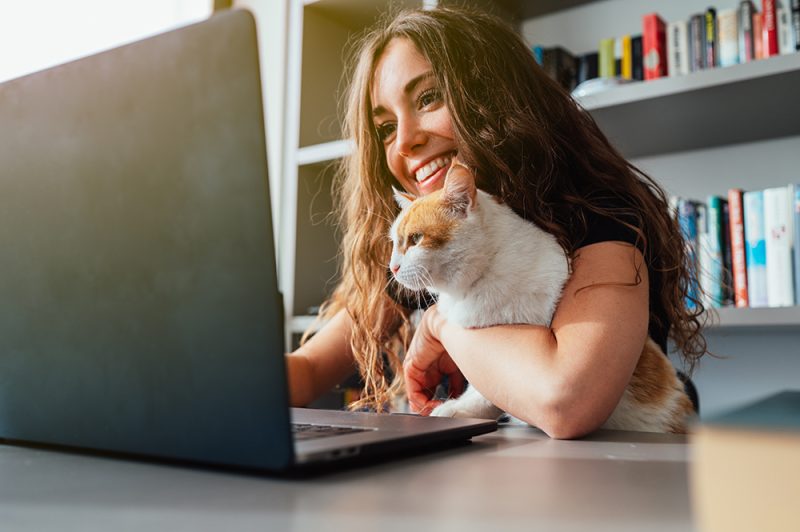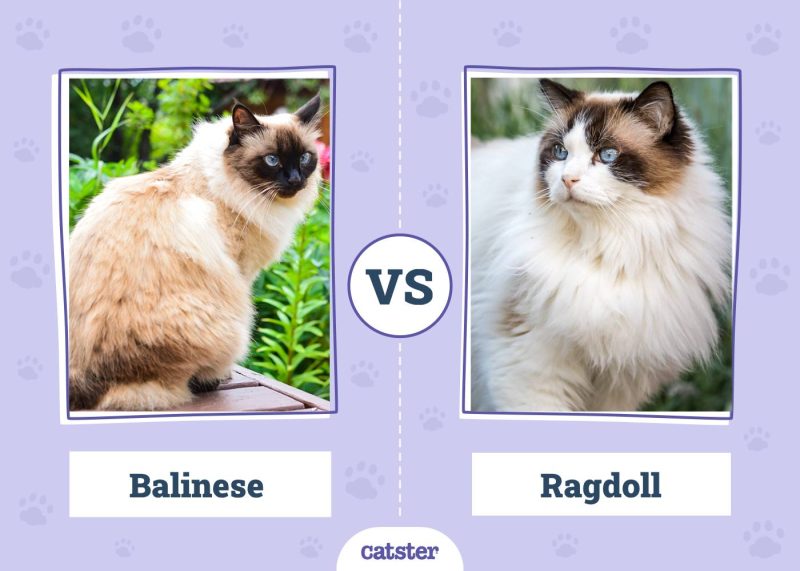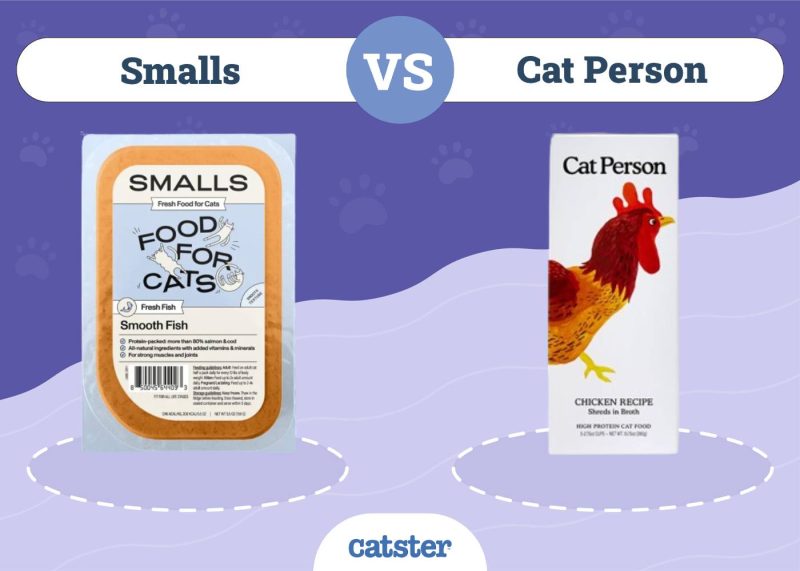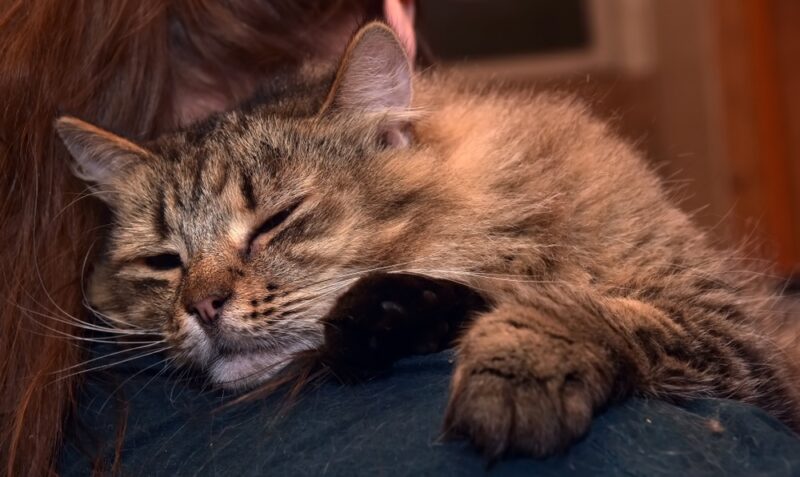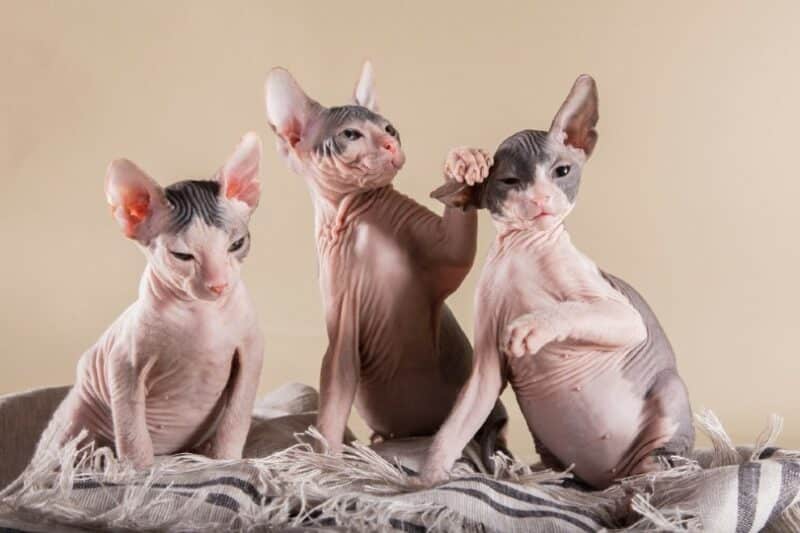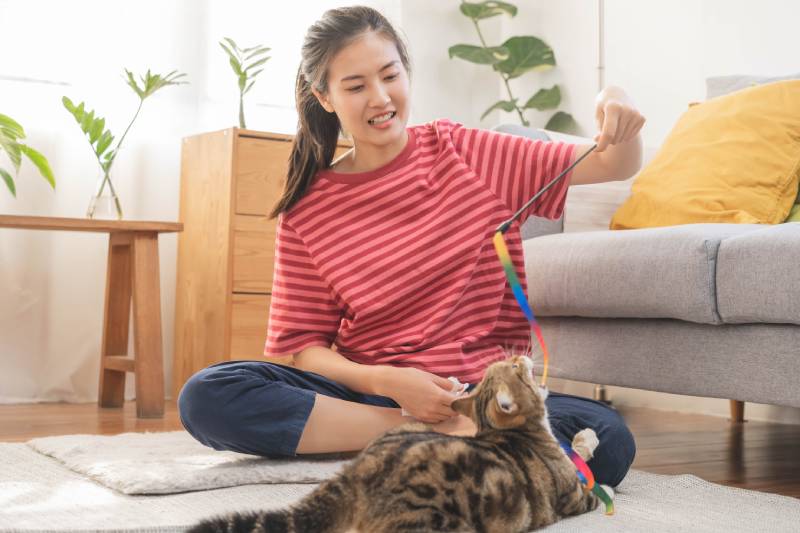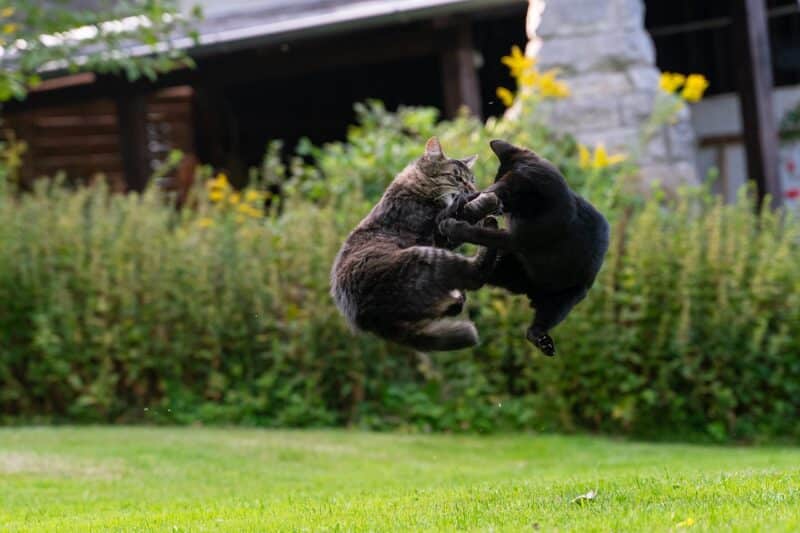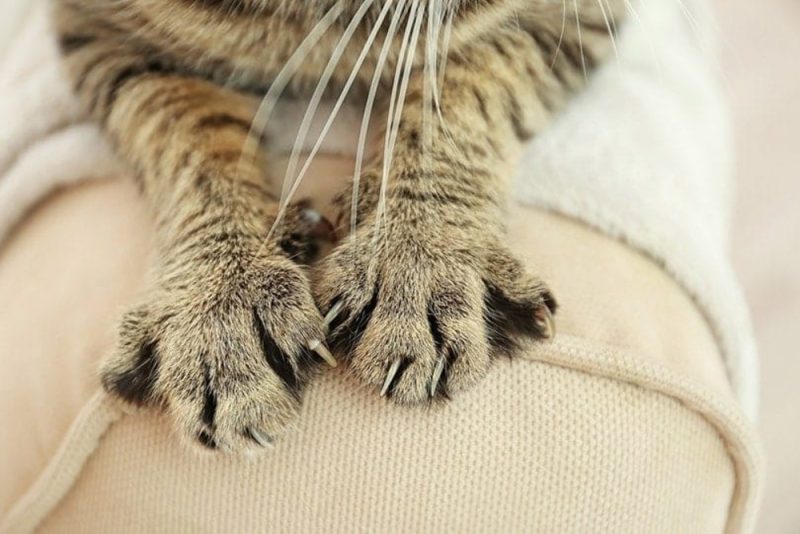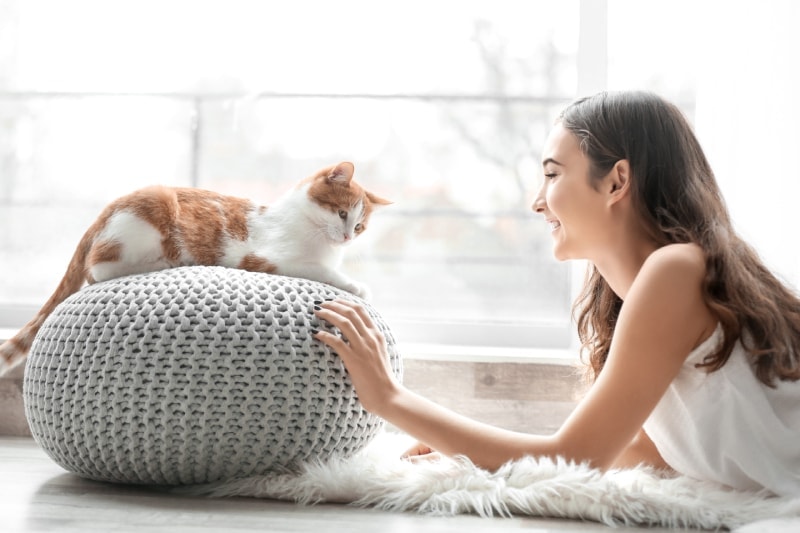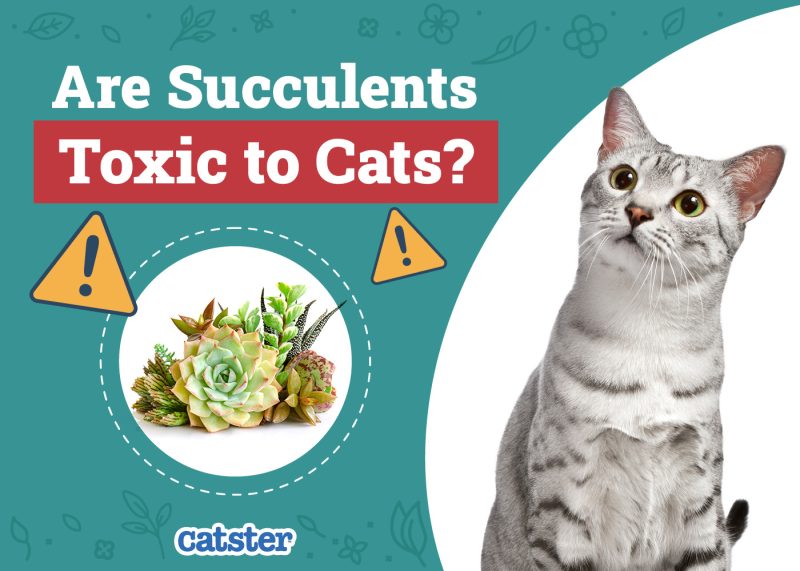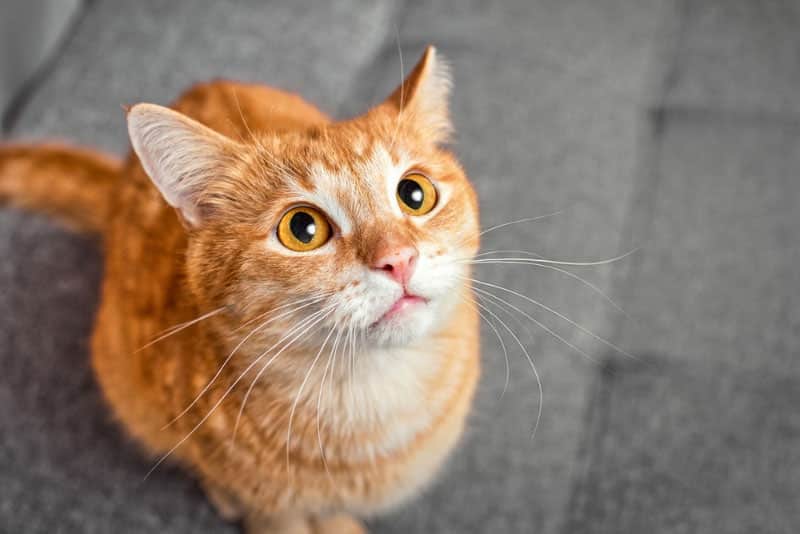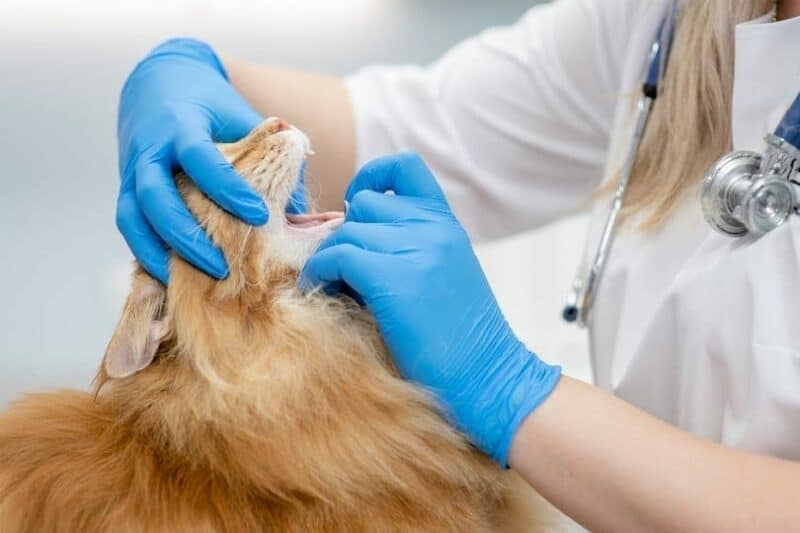While cats may add an element of fun and cute moments to your workspace, they may not be the most productive office mates. Your cat may be confused about why you’re not paying attention to them when you’re working from home. They don’t understand that you need to work to pay for all their food, treats, and toys and can start to distract you as a means of getting your attention.
Fortunately, there are some things you can do to reduce the chances of your cat bothering you while you work from home. Here are some things you can do to prevent your cat from distracting you while you get work done or attend business meetings.

The 10 Ways to Work from Home With Cats
1. Stick to a Daily Routine
Cats are creatures of habit and typically thrive on having a daily routine. A daily routine can help them know what to anticipate next, which can reduce the likelihood of them distracting you while you work. Once they realize that there’s an order to their day, and it includes their meal breaks and scheduled play sessions, they can feel more relaxed and choose to nap rather than bother you.

2. Exercise Your Cats Before Work
Taking preventative measures before you work can help your cats remain relaxed while you work. Make sure to feed your cat breakfast and play with them before your workday starts. Providing exercise opportunities for your cat before work will help them release any pent-up energy and reduce boredom. This will encourage them to rest or take a nap until your next break time.
Cats will often try to interrupt you when they need something. So, it’s also helpful to check their litter box and water bowl. Make sure the litter box is clean and has plenty of litter and refill your cat’s water bowl with fresh water. Having all these things set and ready to go will help your cat feel at peace and reduce the likelihood of them interrupting you while you work.
3. Schedule Play Breaks
One of the benefits of having cats in a workspace is that they can remind you to get up and prevent you from sitting for too long. It’s healthy to take breaks throughout your workday, and your cat will appreciate the scheduled affection and time that’s devoted to them. They’ll enjoy a quick play session to release any energy, and you can feed them lunch or a midday snack to keep them happy and relaxed.
4. Play a Cat TV Video
If your cat pays attention to what’s playing on your TV, try playing a cat TV video. These types of videos contain images and sounds of things that intrigue cats. For example, many cat TV videos contain images of mice scurrying across the screen and have bird calls playing in the background. They can be quite mentally stimulating and keep cats engaged for a while. Since they’re relatively quiet, you can play them while you have a video conference call in a separate room.
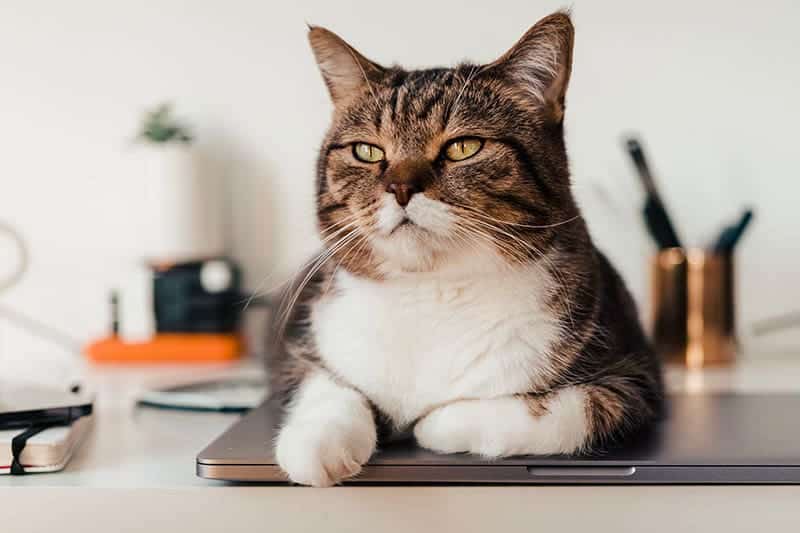
5. Make Your Workspace Less Cat-Friendly
Your cat is less likely to interrupt you while you work if you’re sitting in a space that isn’t designed to be engaging for cats. Place your desk in an area that’s far away from any cat furniture, and make sure their food and water bowls aren’t close by. Remove any cat toys from the room, along with any other items that might pique your cat’s interest.
It’ll be helpful to refrain from eating any snacks in your workspace so that your cat doesn’t come in to beg for you to share your food. Try also to relocate your cat’s litter box so that your cat doesn’t have to cross your workspace to get to it. This can prevent them from checking in and distracting you from your work.
6. Create a Cat-Friendly Space
If your workspace isn’t cat-friendly, your cat will be even more drawn to a cat-friendly space. Cats may distract their owners if they’re feeling anxious or unsafe. So, creating a cat-friendly area can direct your cat to retreat there rather than fight for your attention.
This space should be in a quiet area of the home and include fun cat furniture and toys. Make sure to add a water bowl to this space and plenty of cozy napping spots for your cat. You can also hide treats throughout for your cat to sniff out and find. Your cat will also appreciate it if this space is near their litter box.
7. Save Your Cat’s Favorite Toys for Your Meetings
Have a special set of toys you only use when important meetings are scheduled. Your cat will be less likely to bother you if they’re given fun toys that they rarely get to play with. Cats will often stay distracted and entertained for longer if they’re playing with treat-dispensing toys. If your cat likes catnip or silvervine, sprinkle a fresh layer on their toys for extra fun.
8. Reward Good Behavior
While it takes time, rewarding good behavior and leaving unwanted behaviors unacknowledged will help you in the long run. Your cat may be persistent, but they can learn that pestering you while you work won’t get them the attention they want if you don’t acknowledge this behavior. They can also learn that they get a reward every time they’re lounging on their own if you reward them with treats or attention consistently.

9. Wear Headphones
Sometimes, the noises coming from your computer can pique your cat’s interest. Making it a practice to wear your headphones can prevent attracting your cat to your computer. You can also find fairly affordable wireless headphones with microphones in them so that you can still communicate with others on video conference calls without taking your headphones off.
10. Try Cat Calming Products
Some cats respond well to cat-calming products. These products usually come in the form of sprays, supplements, or collars and contain ingredients that are known to have calming effects. Common ingredients used in these products include lavender, ashwagandha, and chamomile.
It’s important to note that cats respond differently to calming products, and some cats won’t respond at all. Your cat might also respond better when you use these products after exercising and feeding them.

Conclusion
Establishing a work-from-home routine that includes playtime and feeding time often becomes effective over time and reduces the likelihood of your cat distracting you while you work. It’s also helpful to create a cat-friendly space that’s located far from your workspace and to make your workspace as boring for your cat as possible. Make sure to take breaks throughout your work schedule to tend to your cat and play with them. Taking these practical steps will help create a work environment where your cat can feel calm and relaxed so that you can have a productive workday.
Featured Image Credit: Fusso pics, Shutterstock
